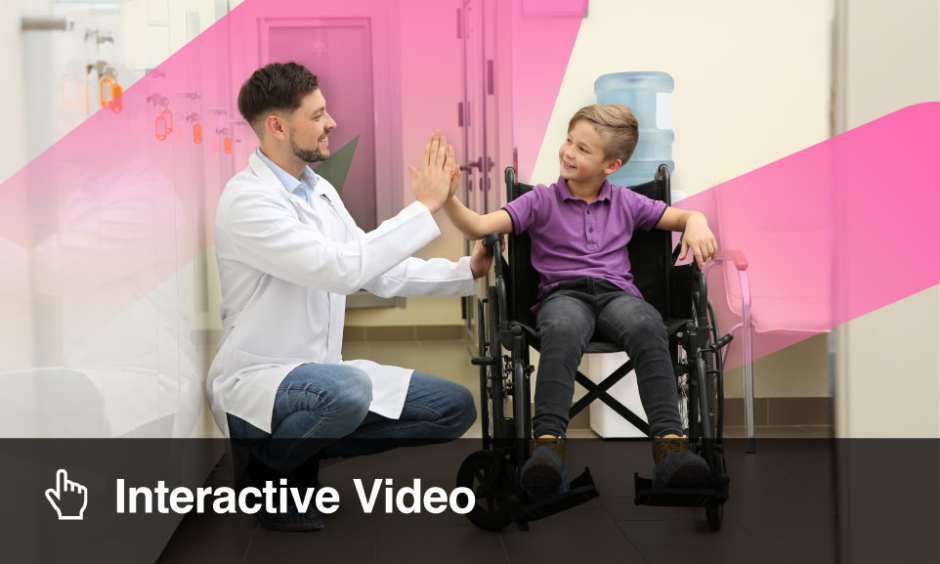Kristian Steen Frederiksen | Consultant Neurologist, Danish Dementia Research Centre, Department of Neurology, Rigshospitalet, University of Copenhagen, Denmark
What influenced your decision to specialise in Alzheimer’s disease (AD) and vascular dementia?
Since medical school I have had a special interest in cognitive neurology and higher cortical functions, and actually started out doing a small pre-graduate research project in biological psychiatry. However, I quickly discovered that it was within neurology that my future lay. Being interested in cognitive neurology led to AD and vascular dementia specialisation. I like working with common diseases and that is probably why I chose to focus on these two dementia disorders.
In July 2020 you were the first author of a manuscript entitled ‘A European Academy of Neurology guideline on medical management issues in dementia’. Could you summarise the main points addressed in this article?
This guideline comes from the realisation that despite the fact that AD and other dementia disorders are not curable, they are manageable in the sense that we can improve the quality of life for patients with dementia and perhaps slow the progression of disease by managing risk factors and associated medical conditions. For example, treating vascular risk factors is likely to reduce progression rates, but nevertheless patients will not always receive the appropriate treatment, sometimes perhaps due to a nihilistic attitude on behalf of the physician, or for fear of side effects. In the guideline, we further give guidance on management of pain, epilepsy, aggression, and agitation in patients with dementia and give recommendations on systematic medical follow-up.
Given that a research interest of yours includes the role of exercise as a potential adjunct to pharmacological treatment of AD, what are the effects of physical activity on Alzheimer’s disease biomarkers and what are the new developments in this field?
Physical exercise is a promising supplement to pharmacological therapies. Findings in the last 10–15 years have underscored the preventive effect of exercise in terms of incident dementia, but also improvements of dementia symptoms in patients with dementia; specifically regarding effects on AD pathology reflected by biomarkers, for example, results are still sparse. Since the early 2000s there have been a lot of promising results in AD animal models demonstrating substantial reductions in β-amyloid, reduced hippocampal atrophy, and also effects on phospho-tau following exercise. In humans, there is a growing evidence base showing some effects on brain volume, but most are in healthy elderly persons or in mild cognitive impairment (MCI). Studies in patients with AD are relatively few, and the findings are somewhat contradictory, for example regarding effects on hippocampal volume. We performed a study in patients with AD in which we investigated the effects of exercise on β-amyloid measured using carbon-11-labelled Pittsburgh compound B (11C-PiB)-PET, and were not able to demonstrate an effect. This is the only study so far to examine the hypothesis that exercise may clear β-amyloid. Our findings do in no way dispel the hypothesis amongst other reasons for the fact that the intervention was relatively short, but also since further studies need to replicate the finding.
Aside from physical activity and exercise, what other non-pharmacological interventions for AD do you believe merit greater attention?
It is always a bit difficult discussing so-called non-pharmacological interventions as they are very different and are difficult to delineate from things such as care. In general, these interventions are difficult to prove effective, some because they are not effective, but in other instances for other reasons. If I should point to one intervention it would undoubtedly be cognitive stimulation, which has convincingly been shown to be effective in MCI and mild dementia. The most well-examined form is cognitive stimulation therapy. Another really interesting intervention is transcranial stimulation, where an electrical current is applied on the cranium to elicit currents on the surface of the brain. I think this, in the future, may be a possible adjunct therapy for patients with dementia. Lastly, multi-modal therapy combining exercise, diet, and cognitive stimulation (or other combinations) also looks promising.
Could you highlight the principal findings and wider relevance of your paper ‘European Academy of Neurology/European Alzheimer’s Disease Consortium position statement on diagnostic disclosure, biomarker counselling, and management of patients with mild cognitive impairment’?
This paper endeavours to give guidance to clinicians diagnosing and managing patients with MCI. MCI is a tricky diagnosis in many respects. Firstly, it is easily misinterpreted as a disease when in actual case it is a syndrome. The consequence of this is that the clinician should always strive to identify the underlying cause of the syndrome. There are many possible causes of MCI, some reversible, some associated with a high risk of progression to dementia, for example in the case of AD. Another issue is that conveying a diagnosis of MCI is not easy. It may be misconstrued as dementia or the physician may not be sure what the patient is experiencing. We also give recommendations on how to discuss whether to do biomarker studies with the patient and how to convey the results of biomarker sampling and their meaning for the patient and their prognosis.
You recently published an article exploring the prevalence of acute delirium and other neuropsychiatric symptoms in patients with COVID-19. What biological mechanisms underlie the association between COVID-19 and cognitive impairment?
The relationship between COVID-19 and dementia is complicated and studies are limited. Nevertheless, it is an intriguing one. There is no doubt that having dementia increases your risk of contracting COVID-19, and also your risk of becoming seriously ill with COVID-19. However, it may also go the other way, i.e., that infection may increase your risk of developing dementia.
There is accumulating evidence that COVID-19 affects brain functions, at least during the acute infection. For example, delirium is common in the acute phase, and a number of other neurological symptoms have been reported, such as cognitive impairment. A few imaging studies have indicated that especially frontal and parietal regions are affected, but also luckily that these changes are reversible and almost resolve 6 months after the infection has been cleared. The mechanisms responsible for the neurological symptoms remain uncertain but may include direct invasion of the virus into the brain and neurons, cytokine storm, or the effects of critical illness and the need for intensive care unit treatments, or a combination of the three.
Could you share the key conclusions drawn from your recent paper, ‘Comparison of the Clinical Impact of 2-[18F]FDG-PET and Cerebrospinal Fluid Biomarkers in Patients Suspected of Alzheimer’s Disease’?
In this study, we addressed the issue of whether cerebrospinal fluid sampling or fluorodeoxyglucose-PET scanning was superior in terms of improvement in diagnostic accuracy in patients with suspected AD. We found that the two examinations were equal. However, interpretation and application of biomarkers need to take the individual clinical question into account.
As a researcher, where can we expect to see your focus progress to in the coming years?
I still have a keen interest in exercise. I have plans for a study of the acute effects of a single bout of exercise on brain functions and cognitive functions as well as signalling molecules released from muscle. The aim is to tease out some of the basic mechanisms coupling exercise and effects on the brain. I think we are missing a really beneficial effect of exercise for patients with dementia, and that is the immediate positive effects of exercise. A kind of ‘runner’s high’. This possible effect is probably not picked up in longer intervention studies over weeks to months. The idea is partly fuelled by my own personal observations that if I manage to fit in a run, or I bike to work, I feel much more able to focus and stay attentive to what I am doing. Plus, my mind finds rest to explore many different ideas when I am running.
In terms of biomarkers, I am initiating a study on prognostic blood-based biomarkers. I find that there is a great need for prognostic biomarkers. This is something I am almost always asked about by patients who receive a dementia diagnosis: “What will I be like in 1-, 2-, or 3-years’ time?” For this, we do not have very good answers. Lastly, I am leading a study on the prodromal symptoms in Lewy body dementia: a really interesting study that I hope will be a small piece in the burgeoning exploration of this fascinating disease.








